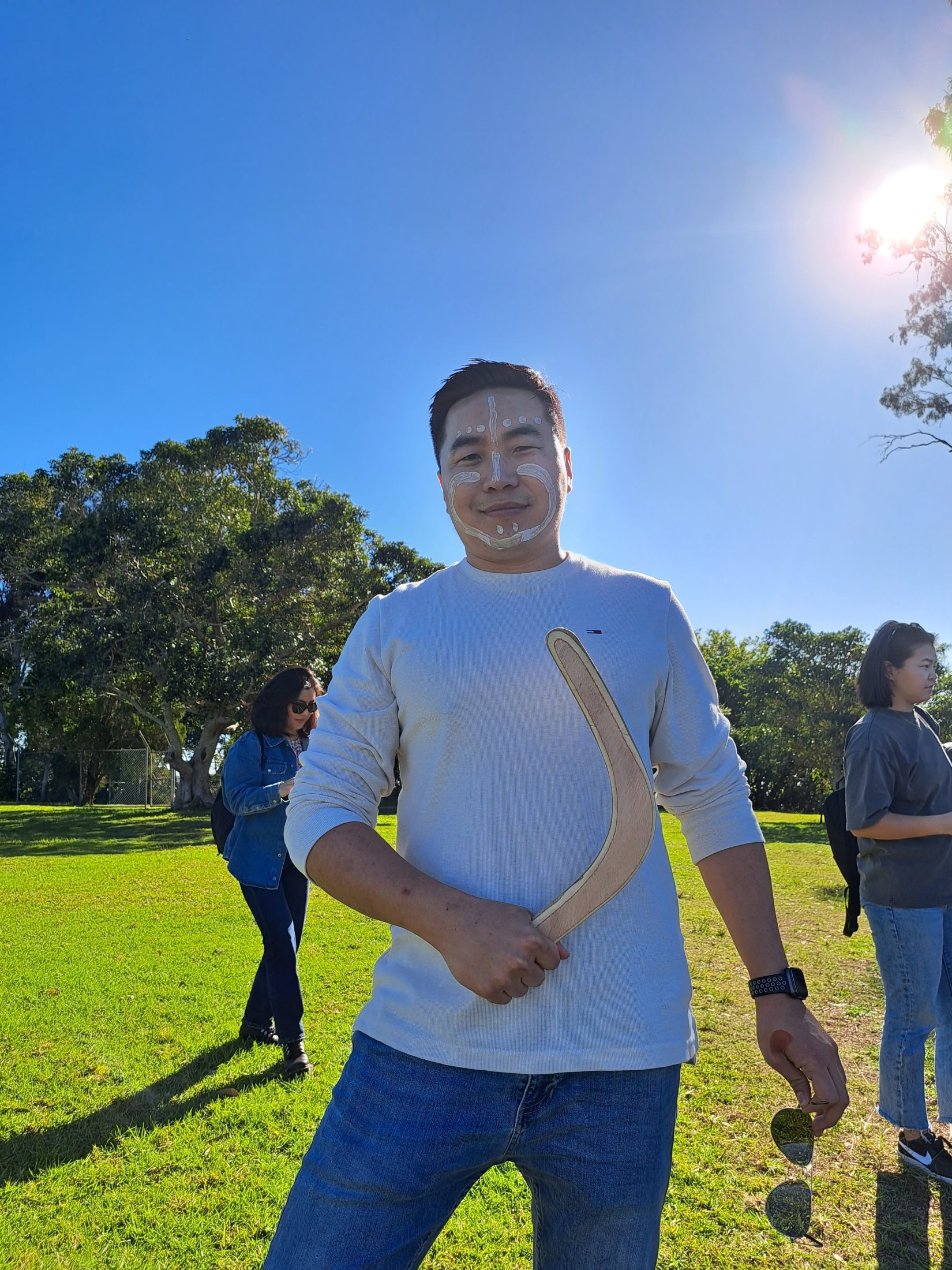NAIDOC Week 2023: Scholars experience Quandamooka culture
Posted: 30 June 2023
Ahead of NAIDOC Week 2023, 14 Queensland-based Australia Awards scholars journeyed to Stradbroke Island for an immersive Indigenous cultural event along the Goompi Trail.
NAIDOC Week is a celebration of the history, culture and achievements of First Nations peoples. Its origins can be traced to the emergence of Aboriginal groups in the 1920s which sought to increase awareness in the wider community of the status and treatment of Aboriginal and Torres Strait Islander Australians.
After taking a ferry from Brisbane to Minjerribah (Stradbroke Island), 14 scholars from South Asia and Mongolia met with Matthew Burns, a proud Quandamooka man, for an enriching cultural experience. Sitting on Quandamooka Country, scholars learnt about the culture and history of the site and viewed artefacts and tools. Scholars were delighted by the sounds of the Yidaki, or digeridoo, and Mr Burns invited them to try throwing a boomerang.
Mr Burns discussed with scholars the concept of Caring for Country and understanding the environmental signatures of time. Using a significant tree as an example, Mr Burns explained that “it is Tala fish season when the yellow flowers bloom. When hairy caterpillar cocoons are present on the tree, it is mullet season. When the yellow flower dies, the flathead will be plentiful.”

Mr Burns uses the tree to explain Indigenous knowledge of environmental time signatures.
Meaning ‘shellfish’, Goompi was a meeting place for fishing, eating and community rituals. Walking along the Goompi Trail, scholars were shown evidence of hundreds of years of feasts with shellfish deposits in the shoreline. Mr Burns identified plants and discussed their uses. Sri Lankan scholar, Halida Mohamed Mahroof was struck by the resemblance of the Macarenga peltata plant to the Sri Lankan ‘kenda colla’, used to wrap food for cooking. Nepali scholar Sudip Ale Magar enjoyed grinding stones to produce a coloured pigment called ochre. Once the ochre was prepared on the shore with water and rocks, Mongolian scholar Nyambat Ganbold was the first to volunteer to have the ochre painted on his skin.

Mongolian scholar Nyambat Ganbold
Maldivian scholar Fathmath Hulwa Khaleel was moved by the truth-telling and personal stories shared by Mr Burns. “To know the reality of the treatment of the Quandamooka people and see Mr Burns’ generosity of storytelling, made for a deeply personal connection to the experience.”